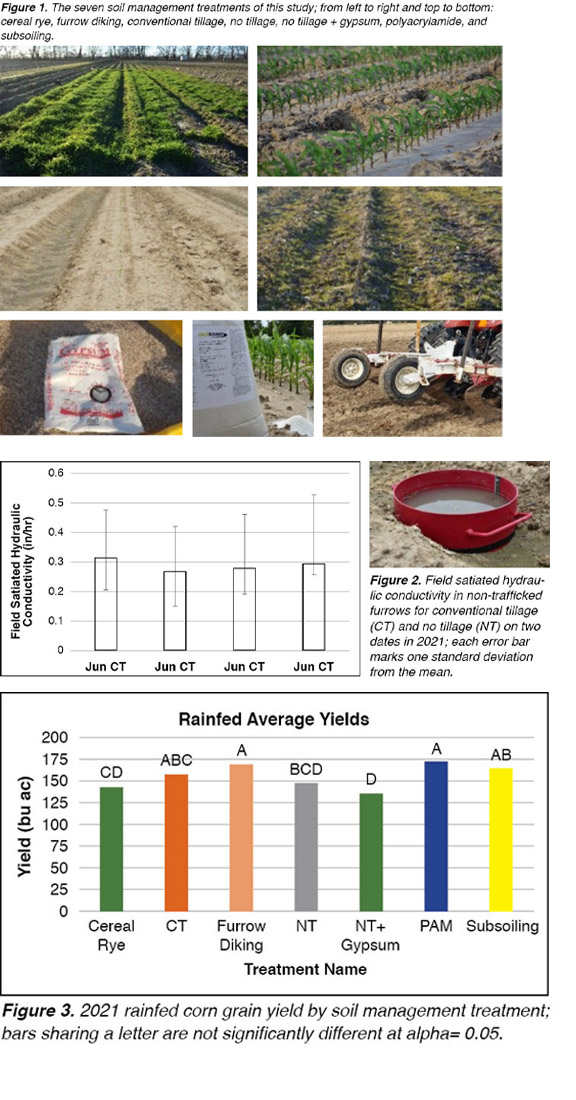Research Project
Soil Management Effects on Furrow Infiltration and Rainfed Corn Yield
Investigators: Jacob Rix, Himmy Lo, Drew Gholson, Gurbir Singh, Daran Rudnick
Date: 2021
Project Summary
Introduction
In the Mississippi Delta, many silt loam soils tend to form a surface seal or crust as the growing season progresses, which limits infiltration of rain and irrigation into the soil. The consequence of this problem is decreased yield on rainfed fields and increased pumping on irrigated fields, which can compensate for lower infiltration but accelerates groundwater depletion. Regardless of irrigation availability, more runoff as a result of surface sealing can worsen flooding, soil erosion, and contamination of downstream waters and habitats. Research is being conducted on a 7-acre silt loam field in Stoneville, MS, to find practical solutions to reduce surface sealing.
Materials and Methods
A randomized complete block design was followed to replicate each of seven treatments (Figure 1) in eight continuous corn plots: cereal rye, furrow diking, conventional tillage (CT), no tillage (NT), NT + gypsum, polyacrylamide (PAM), and subsoiling. 2021 represented the third consecutive year for the subsoiling treatment and the fifth consecutive year for the CT, NT, and cereal rye treatments.
Results and Discussion
In 2021, field satiated hydraulic conductivity was measured in the CT and NT treatments because they were originally expected to be most different. Field satiated hydraulic conductivity indicates the ease of water infiltrating into the soil under nearly saturated field conditions, such as during furrow irrigation. Infiltration tests were conducted in June and again in October, each time using three cylindrical steel rings in the middle non-trafficked furrow of every CT and NT plot. There was no significant difference between NT and CT at alpha = 0.05 for either measurement time (Figure 2), suggesting that solely converting from CT to NT for several years might not improve in-season infiltration under circumstances similar to this experiment. The rainfed corn yield of the seven treatments was also measured as an indirect indicator of soil infiltration because treatments with higher infiltration would store more soil moisture to withstand drought later in the season. In 2021, PAM and furrow diking were significantly higher in yield than NT at alpha = 0.05 (Figure 3). Future research will further investigate PAM, furrow diking, subsoiling, and cereal rye treatments to quantify the effect of these treatments on furrow infiltration
Project Photos

- Crop Type:
- Corn
- Topic:
- Cover Crops
- Tillage
Find Research
By Crop Type
By Topic
Contact NCAAR
General Information
Kaye Sullivan
vfs23@msstate.edu
662.390.8510
F:662.390.8501
Showcase Demo
Drew Gholson, Coordinator
drew.gholson@msstate.edu
662.390.8505
Himmy Lo
himmy.lo@msstate.edu
662.390.8509

